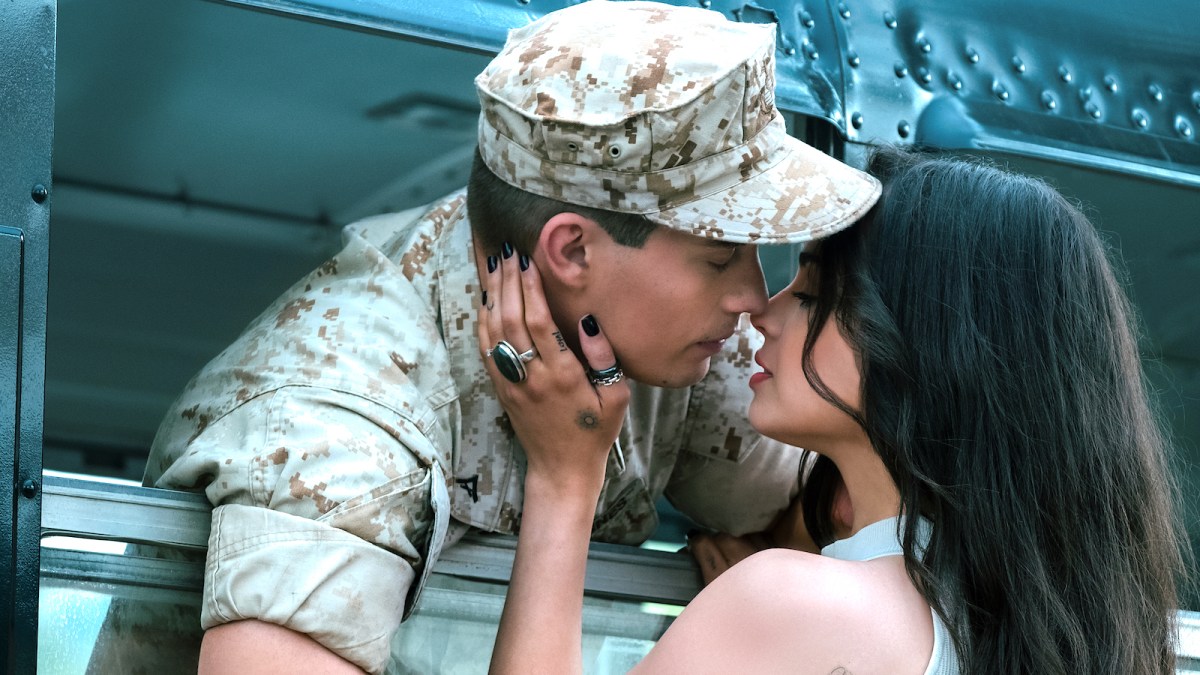Netflix’s Purple Hearts blew up when it hit the streaming platform this summer. The love story about a liberal struggling musician who enters into a fake relationship with a conservative Marine to get health insurance has, for the most part, received an overwhelming tidal wave of praise. However, among that praise has come an influx of criticism. Now, people are calling the film out for portraying racist and misogynistic themes.
Among the thousands of hours spent on Netflix, 102,000 of those have gone to Purple Hearts since its release on July 29, making the romance the most watched movie of August so far, according to Netflix Top 10. Recent backlash not withstanding, it’s poised to continue the momentum.
While Purple Hearts has been praised on various fronts — such as positively portraying Type 1 Diabetes — the backlash it is receiving has ignited a familiar debate in Hollywood, with fans turning to social media to offer their varying opinions on the matter.
Why are people criticizing Purple Hearts?
Some of the most vocal critics have taken issue with a scene in which a Marine makes a toast and says, “This one is to life, love and hunting down some goddamn Arabs, baby!”. Cassie (Sofia Carson) calls the Marine out, but is quickly shut up by those at the table and also by her new husband, Luke (Nicholas Galitzine) who tells her to “sit down.”
The racist and misogynistic scene sparked outrage among some viewers who took to social media to voice their displeasure. One person tweeted that the movie wasn’t even “sublte but blatantly anti arab anti hispanic racist misogynistic AND pro military propaganda.”
But that scene alone hasn’t been the movie’s sole target of backlash. This Twitter user criticized the trope Hollywood often places on Latinas in movies where they’re paired with racist white men, calling it “impossible” to think of Purple Hearts as romantic.
Nevertheless, YouTube user Ally’s Corner called the movie “so beautiful” and unlike “most romantic movies nowadays.” YouTube user So-meiChi echoed the sentiment, saying the film “isn’t your average romance movie” and called it “absolutely gorgeous.”
While the overwhelming praise has easily rivaled the criticism, that doesn’t mean director Elizabeth Allen Rosenbaum hasn’t become aware of the backlash. In speaking with Variety, she explained the necessity of highlighting flaws in fictional characters as realistically as possible — however uncomfortable that may be — if only to emphasize their growth down the road. And also to make a compelling story, because Purple Hearts is, after all, a fictional story.
“I hope that people understand that in order for characters to grow, they need to be flawed in the beginning. So we very much intentionally created two characters that had been bred to hate each other. They are flawed at the beginning and that was intentional. In order for the red heart and the blue heart to kind of turn purple, you have to have them be kind of extreme. Some of the people that they’re surrounded with are even more flawed than they are. They both have been neglected by the system; he’s hurt in a war that doesn’t seem to be ending and she’s slipping through the cracks of the healthcare system. So they’re both neglected by the system, and then they live under one roof, and in these extreme circumstances, they learn to become more moderate and to listen to each other and to love.”
America’s flaws have been on full display in recent years, and Rosenbaum was adamant in pointing those out in the film.
“That was the biggest, most important part of the theme. I do hope that anyone who’s in any way insulted by it understands that our intentions are very pure, and it’s because we feel like people need to grow and need to start to become more moderate.”
Sofia Carson — who plays the titular character of Cassie and also serves as the movie’s executive producer — explained why she chose to be part of the film, calling the juxtaposition between the main characters and their devotion to their unlikely relationship “beautiful.”
“Why I fell in love with the movie is that it’s a love story but it’s so much more than that. It’s two hearts, one red, one blue, two worlds apart, who are really raised to hate each other. Through the power of love, they learn to lead with empathy and compassion and love each other and turn into this beautiful shade of purple. We wanted to represent both sides as accurately as possible. What I think I’ve learned to do as an artist is separate myself from all of that and just listen to what the world is feeling and reacting to with the film. That has been so beautifully overwhelming and so many people have felt seen or are comforted by this movie. That’s all we could want [as] filmmakers and as artists.”
Those eager to see for themselves what the fuss is all about can stream Purple Hearts on Netflix.











Published: Aug 15, 2022 01:00 pm